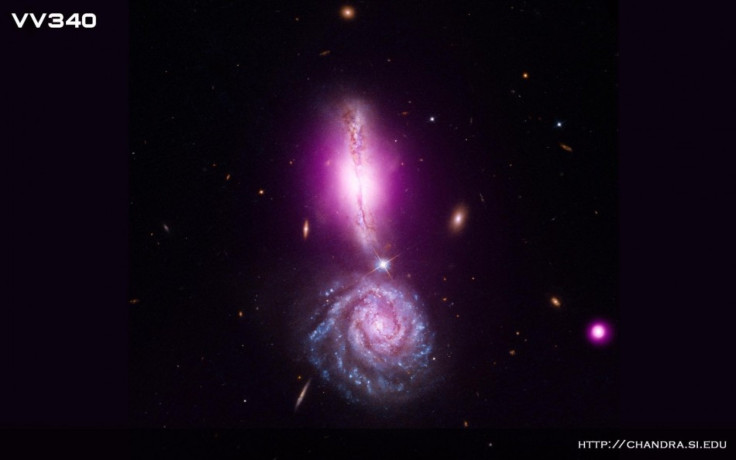NASA's Spectacular Hubble Images and Video of Colliding Galaxies

NASA released an image of beginning stage of colliding galaxies, VV 340, also known as Arp 302. The edge-on galaxy near the top of the image is VV 340 North and the face-on galaxy at the bottom of the image is VV 340 South. Millions of years later these two spirals will merge -- much like the Milky Way and Andromeda will likely do billions of years from now. VV 340 is located about 450 million light years from Earth.
Collision of galaxies is quite common in the galactic evolution. To be more appropriate, these are not exactly collisions in the general sense of the word, but are gravitational interaction of galaxies. Colliding usually leads to merging as the individual galaxies wouldn't have enough momentum to continue traveling after the collision. If one of the colliding galaxies is much larger than the other, it will remain largely intact after the merger, but the smaller galaxy will be torn apart and become part of the larger galaxy.
Galaxy collision simulations on computers are quite common which imitates realistic physics, including gravity forces, gas dissipation, star formation and feedback. Dynamical friction slows down galaxy pairs, which may or may not merge at some point, according to the initial relative energy of the orbits.
NASA's Chandra X-ray Observatory and the Hubble Space Telescope produced the image.
Hubble Astronomer Creates Spectacular Galaxy Collision Visualization:
In this scientific visualization, released in April 2002, two spiral galaxies are set on a collision course. As one slices through the other, both are disrupted. The tidal forces of gravity produce long tails of material streaming away from the collision. The central regions relatively quickly fall together and merge. The visualization is based on research data from a supercomputer simulation, with stars shown in yellow and gas shown blue. Time passes at about 30 million years per second, lasting a total of about 1.5 billion years. Such a collision may occur for our Milky Way Galaxy and the neighboring Andromeda Galaxy in about five billion years.
Visualization By: Frank Summers (Space Telescope Science Institute)
Simulation By: Chris Mihos (Case Western Reserve University) and Lars Hernquist (Harvard University)
© Copyright IBTimes 2024. All rights reserved.





















